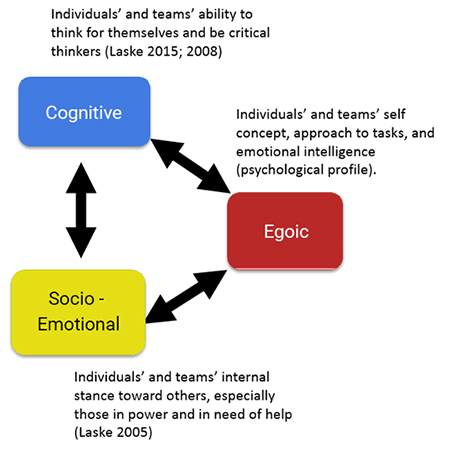
We see organizational practices as structured in terms of the three dimensions depicted on the left. These dimensions form the core of organizations’ human capital. We have found that in order to guide the digital transformation of businesses, CEOs and Boards need to practice complexity thinking in the three interrelated dimensions described below:
Human capital by design: Human capital comprises what algorithms — whether embodied as robots or not– cannot deliver. It stands out for its deep developmental potential that unfolds over individuals’ lifespan. Its capabilities and action-logic can be enhanced through deliberately developmental processes that address the cognitive, social-emotional, and psychological (egoic) dimensions of individuals and teams.
Leadership by design: Leadership stands out for its openness to being shared to variable degrees, which defines how an organization’s Capability Architecture (CA) relates to its Accountability Architecture (AA). Leadership means different things depending on how it is distributed among individuals and teams. This distribution is in flux and determines the relationship between the two architectures.
Developmental organization by design: Organizations designed as developmental organisms follow the action logic of open systems. In such systems, the balance between requisite roles and just-in-time scaffolding of developmental needs surfacing in the context of specific practices and projects is constantly shifting. This balance escapes organizations as long as the difference between horizontal learning and the vertical development of human capital is not understood.